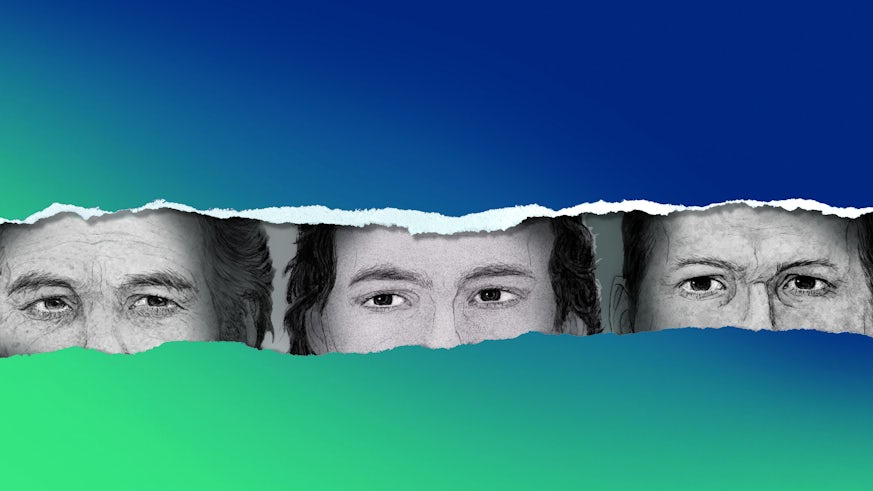Cardiff University research leads to new discoveries about the Mary Rose
14 March 2019

A Cardiff University archaeologist has revealed new insights into the origins of the crew on board the Mary Rose, the flagship of Henry VIII’s navy.
The scientific findings of Jessica Scorrer, MSc student and Dr Richard Madgwick, Senior Lecturer in Archaeological Science, suggest that crew members on the Tudor warship, which sank in 1545, may have come from as far away as southern Europe and perhaps even Africa.
This research, which also involved Swansea University and the University of Portsmouth, forms the basis of a new exhibition at the Mary Rose Museum. The Many Faces of Tudor England is open from Monday 18 March – 31 December, and runs in partnership with the new documentary Skeletons of the Mary Rose: The New Evidence, part of the award-winning series Secret Histories. The hour-long show airs on Channel 4 at 8pm on Sunday.
Using a process called isotope analysis, the researchers were able to find chemical signals locked in the teeth of the crew which provide evidence for different aspects of their early life. PhD students Katie Faillace also undertook osteological analysis on selected remains, reaffirming the African ancestry of one of the crewmates known as ‘Henry’.

It’s only with the integration of a range of biomolecular methods that we’re able to provide these new insights into the diverse crew of the Mary Rose, with some coming from southern Europe and perhaps beyond. It’s exceptionally rare to reconstruct past life histories in such detail, from earliest life to death.
‘Henry’ is one of the most complete of the 92 reconstructed crew skeletons, which were found when the Mary Rose was raised in 1982. The latest research reveals he was aged between 14 and 18. Oxygen isotope analysis of his teeth suggests that he was raised in Britain, in the West or South, while his sulphur value suggests that he was born within 50km of the coast. Further results suggest he was raised in an area of Palaeozoic geology, such as is found in North Devon.
One of Henry’s teeth was also extracted for DNA analysis by researchers at the University of Portsmouth. Mitochondrial DNA, passed almost exclusively from mother to offspring through egg cells, reveals that his mother was English but his nuclear DNA, information coming from two parents, suggests his father came from North Africa. This means ‘Henry’ is genetically similar to current day Moroccans, Mozabite Berbers of Algeria or individuals from the Near East.
Another discovery is about the Archer Royal, who was found trapped under the rear axle of a bronze cannon on the main deck, his longbow beside him. Because of the famed longbow skills of English forces, it has always been presumed that this Archer was English.
But oxygen isotope analysis on his teeth provided an oxygen value much higher than the British norm – one of the highest ever to be recorded in Britain - suggesting he was not born in Britain but grew up in a hotter climate. It is now believed that this Royal Archer may have come from inland North Africa, over 50 km from the coast.
The Mary Rose was a warship commissioned by Henry VIII in 1509. Five and a half wives later, in 1545, it sank outside Portsmouth harbour. Dramatically raised in 1982, you can now see the Mary Rose and thousands of authentic, everyday Tudor objects displayed in the museum in Portsmouth.
Dr Alexzandra Hildred, Head of Research and Curator of Ordnance and Human Remains at the Mary Rose, said: “Based on new scientific evidence derived from isotope analysis as well as DNA testing of teeth and bones, this exhibition takes you on a journey of discovery, exploring the backgrounds of a number of the crew. It also considers what the finds from the Mary Rose can tell us about diversity and globalisation in Tudor England, 500 years ago.”
Isotope samples were prepared at Cardiff University Bioarchaeology Laboratory and analysed at the Cardiff University Stable Isotope Facility, the Cardiff EARTH Laboratory for Trace elements and Isotope Chemistry (CELTIC) facility and the NERC Isotope Geosciences Laboratory.
Cardiff University students Jessica Scorrer and Katie Faillace also assisted with the project.
Share this story
The School allows the brightest and best to explore and share their passion for past societies and religious beliefs, from prehistory to the present day.




